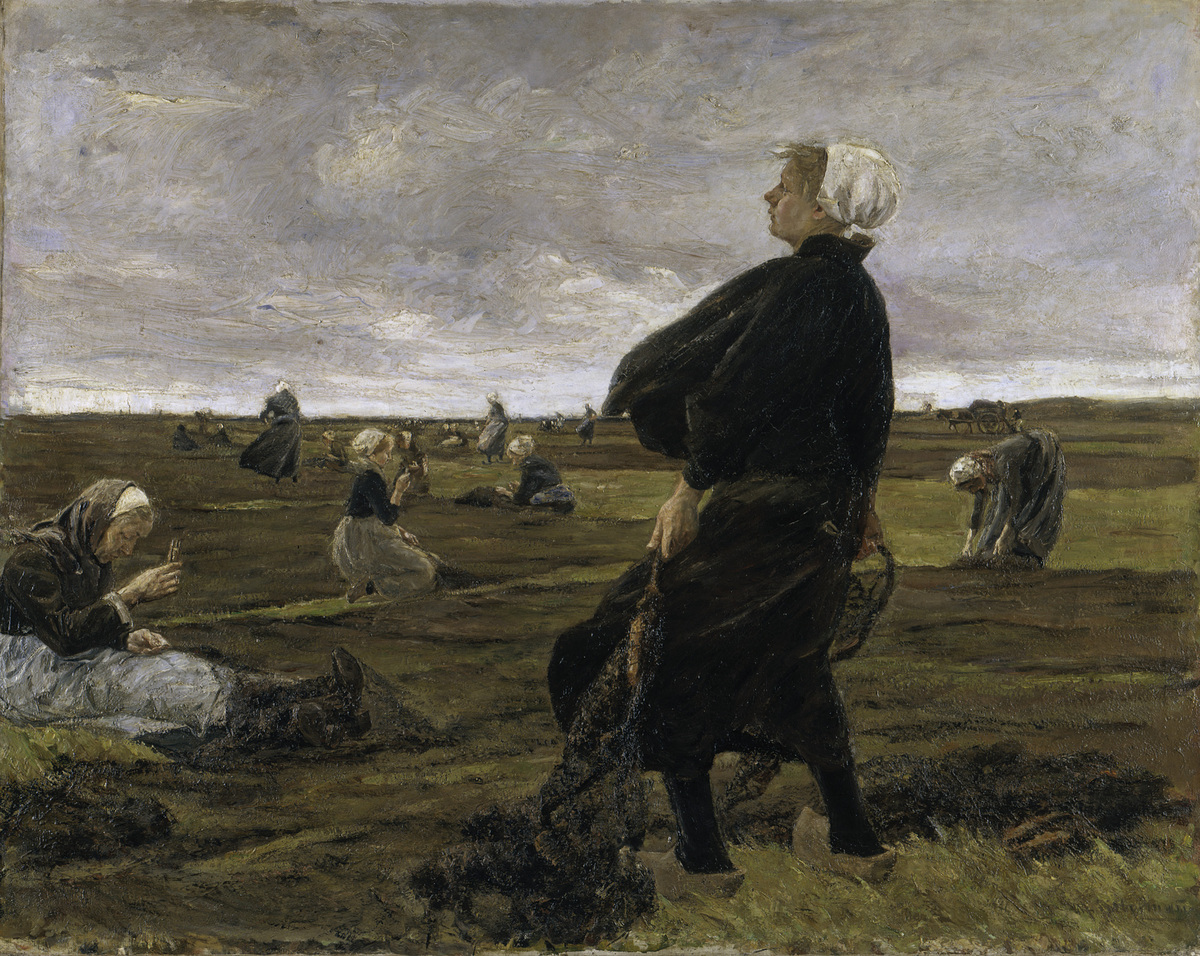Abstract
By the late 1880s, Max Liebermann (1847–1935) was accustomed to being
attacked by art critics for the social sympathies he had been displaying
for years. His first naturalist paintings from the 1870s, though widely
exhibited in Hamburg, Berlin, and Paris, had been criticized for
portraying depressing and “inconsequential” scenes of everyday life in
rural settings. When such criticisms helped lower the price of his
works, the sting was all the greater. This painting, for example, was
acquired by Alfred Lichtwark for the Hamburg Art Museum for a mere 1,000
marks in 1889—after being shown at a Berlin exhibition of
plein-air painters in February of
that year and at the Paris Universal Exposition that summer. While the
men’s close friendship may have eased this exchange, the low price
surely disappointed Liebermann nonetheless.
Reminiscent of François Millet’s The
Gleaners (1857), the painting introduces a windswept landscape in
which poor Dutch women mend fishing nets. Their backbreaking work,
reflected in the posture and facial expression of the foreground figure,
commands Liebermann’s sympathy and respect, especially considering that
lower-class women at this time were usually portrayed in melodramatic,
humorous, or tragic situations. The force of nature is also evident
here. Broad strokes convey the impression of wind and light sweeping
down from the billowing clouds and across the entire canvas. Specific
details that might distract the eye and reduce the overall impression
are consciously avoided, although the faces are far from indistinct.
This style was criticized for giving Liebermann’s (and other German
Impressionists’) work a sketchy, “unfinished” quality—one that was
difficult for traditionalist German burghers to understand or accept.
Liebermann, however, was not trying to paint nature itself; rather, as
he once put it, he was interested in portraying the ideas and emotions
he derived from nature as convincingly as possible.
